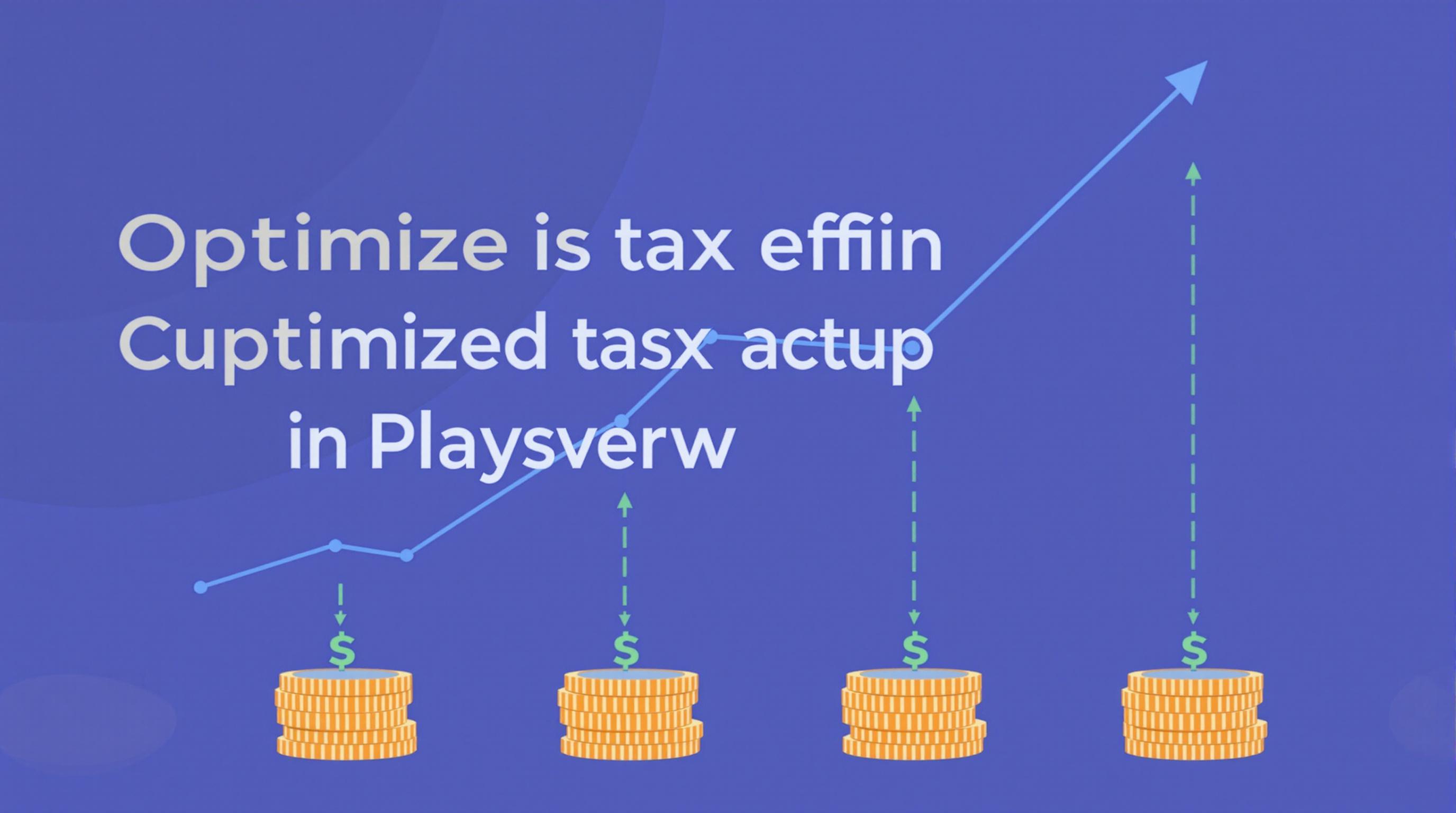Related Articles
- Unlocking Wealth: How Climate-Resilient Crops Are Shaping Financial Stability Amid Price Volatility
- Top 6 Emerging College Savings Solutions Unveiled Recently That Transform How Families Build Funds
- The surprising role of urban farming in creating economic buffers during volatile market cycles
- Unveiling the Quiet Impact of Climate Change on Municipal Bond Maturity Structures and Laddering Choices
- How Intergenerational Debt Shapes Families’ Ability to Fund Higher Education in Unseen Ways
- Top 6 Dynamic Laddering Tools from the Last Five Years Revolutionizing Interest Rate Risk Management
9 Proven Steps to Optimize Tax Efficiency in Bond Laddering for Higher After-Tax Returns
9 Proven Steps to Optimize Tax Efficiency in Bond Laddering for Higher After-Tax Returns
9 Proven Steps to Optimize Tax Efficiency in Bond Laddering for Higher After-Tax Returns
Introduction to Bond Laddering and Tax Efficiency
Bond laddering is an investment strategy that involves purchasing bonds with staggered maturities. This approach helps manage interest rate risk and provides steady income over time. However, while bond laddering is effective for generating reliable returns, tax efficiency is a critical factor often overlooked by investors.
Tax efficiency refers to structuring your bond portfolio to minimize tax liabilities and maximize after-tax income. Since interest earned from bonds is typically taxed as ordinary income, optimizing for taxes can significantly affect your net returns. Understanding how to align bond laddering with tax strategies is essential for enhancing profitability.
In this article, we will explore nine proven steps to optimize tax efficiency in bond laddering. These steps will help investors strategize bond purchases and holdings to achieve higher after-tax returns while maintaining a balanced risk profile.
1. Understand the Tax Treatment of Different Bonds
Different types of bonds have varying tax implications. For example, municipal bonds often offer federal tax-exempt interest, while corporate and Treasury bonds are generally fully taxable. Knowing the tax status of your bonds provides the foundation for effective tax optimization.
Investor income tax brackets will also influence how you prioritize bond types. For those in higher brackets, municipal bonds can deliver superior after-tax returns despite lower nominal yields because the interest is usually exempt from federal and sometimes state taxes (IRS Publication 550).
Being knowledgeable about tax treatments enables you to select bonds that match your tax situation, thus reducing taxable income and increasing after-tax earnings over time.
2. Use Tax-Advantaged Accounts to Hold Taxable Bonds
Housing taxable bond holdings inside tax-advantaged accounts such as IRAs or 401(k)s can shield interest income from immediate taxation. Since earnings grow tax-deferred, you avoid the annual hit on interest payments, compounding returns more efficiently.
This strategy is especially beneficial for bonds with interest taxed as ordinary income, like corporate bonds. By moving these bonds into tax-deferred accounts, you allow your portfolio gains and income to accumulate without year-to-year taxation.
Coordination between bond laddering and account types is vital. Consider prioritizing tax-exempt bonds for taxable accounts and placing taxable bonds in retirement accounts to maximize after-tax returns.
3. Prioritize Municipal Bonds in Higher Tax Brackets
Municipal bonds, or "munis," are often issued by cities, states, and local governments. Their interest income is generally exempt from federal tax and possibly state tax if you live in the issuing state. This makes them an attractive choice for investors in high tax brackets.
When laddering bonds, allocating a significant portion to municipal bonds in your taxable accounts can reduce your overall tax burden. Although muni yields may be lower than corporate bonds, their tax advantage often leads to greater after-tax returns.
Research from Morningstar highlights that in higher tax brackets (28% and above), municipal bonds tend to outperform taxable bonds on an after-tax basis, reinforcing their role in an optimized bond laddering strategy.
4. Consider Tax-Loss Harvesting Opportunities
Tax-loss harvesting involves selling bonds that have declined in value to realize losses that offset taxable gains or income. This strategy can reduce your current tax liability while allowing you to maintain exposure to similar assets through replacement purchases.
In a bond ladder, periodic review of bond performance is crucial. Taking advantage of market fluctuations to harvest losses can help reduce your tax bill while preserving your ladder structure and income streams.
However, be mindful of the IRS wash-sale rules, which disallow repurchasing the same or substantially identical security within 30 days. Planning around this ensures that you benefit from harvesting losses without violating tax regulations.
5. Utilize Bond Funds for Greater Flexibility
Individual bonds require significant capital and carry reinvestment risk when maturing sooner than anticipated. Bond funds, especially tax-managed bond funds, offer diversification, professional management, and targeted tax strategies.
Tax-managed funds aim to minimize taxable distributions by employing strategies such as harvesting losses at the fund level or holding bonds until maturity. This allows investors to benefit from laddered maturities with less tax friction.
Additionally, bond funds simplify rebalancing when adjusting your ladder, facilitating continuous adjustment without triggering large taxable events, which is particularly advantageous for taxable accounts.
6. Match Bond Maturities to Your Income Needs and Tax Situation
Scheduling bond maturities based on your anticipated income needs can aid in managing both cash flow and tax impact. For instance, if you expect to be in a lower tax bracket in retirement, shifting maturities to those years can result in tax savings.
Aligning maturity schedules with tax projections allows for strategic realization of income at favorable tax rates. This approach requires careful planning and periodic reassessments to adapt to changing circumstances.
Tools such as financial planning software and consultations with tax professionals can help design bond ladders that reflect your long-term tax and income goals.
7. Reinvest Interest Income Strategically
Interest income from bonds can be reinvested to grow your portfolio, but where you reinvest matters for tax efficiency. Feeding interest income back into tax-exempt bonds or tax-advantaged accounts keeps the tax drag minimal.
Avoid automatically reinvesting interest income into fully taxable securities, as repeating this cycle increases your annual tax burden. Thoughtful reinvestment decisions support compounding growth with reduced taxes over time.
Implementing automated but adjustable reinvestment plans can help maintain discipline while allowing for tax-aware adjustments as market and tax conditions evolve.
8. Leverage Step-Up in Basis Rules for Estate Planning
Bonds held until death receive a step-up in cost basis to their fair market value, eliminating capital gains taxes on appreciation accumulated during lifetime hold. Utilizing this aspect in estate planning can preserve wealth and reduce tax liabilities for heirs.
Incorporating bond laddering into estate strategies involves considering holding periods and potential inheritance tax rules. Consulting with estate planners will optimize both tax efficiency and wealth transfer objectives.
For taxable accounts, the step-up in basis can provide significant tax relief, while tax-advantaged accounts follow different rules that should be factored into overall planning.
9. Regularly Review and Adjust Your Bond Ladder
Tax laws and personal circumstances evolve, so static strategies may become inefficient over time. Periodic review of your bond ladder ensures that tax optimization remains aligned with current regulations and your financial goals.
Adjusting holdings based on changes in tax brackets, legislation, or life events, such as retirement or a move to a different state, maintains the efficiency of your portfolio.
More frequent rebalancing may be necessary during volatile interest rate environments to manage risk and tax outcomes effectively. Utilizing professional advisory support can enhance the effectiveness of these reviews.
Conclusion
Optimizing tax efficiency in bond laddering is a multifaceted process that requires an understanding of bond types, tax treatments, account placement, and strategic timing. By following these nine proven steps, investors can significantly enhance their after-tax returns while managing risk.
From leveraging municipal bonds in taxable accounts to utilizing tax-advantaged accounts for taxable securities, these strategies combine to create a resilient and tax-efficient income stream. Regular review and adjustments further ensure continued success amid changing tax landscapes.
Incorporating these best practices into your bond laddering approach can lead to more robust portfolio performance and a sounder financial future.
Sources:
IRS Publication 550: Investment Income and Expenses – https://www.irs.gov/pub/irs-pdf/p550.pdf
Morningstar, Municipal Bond Tax Efficiency Report, 2023.




